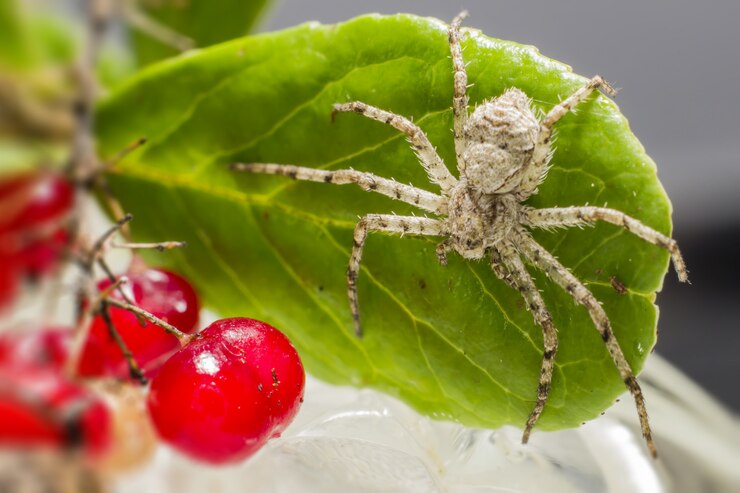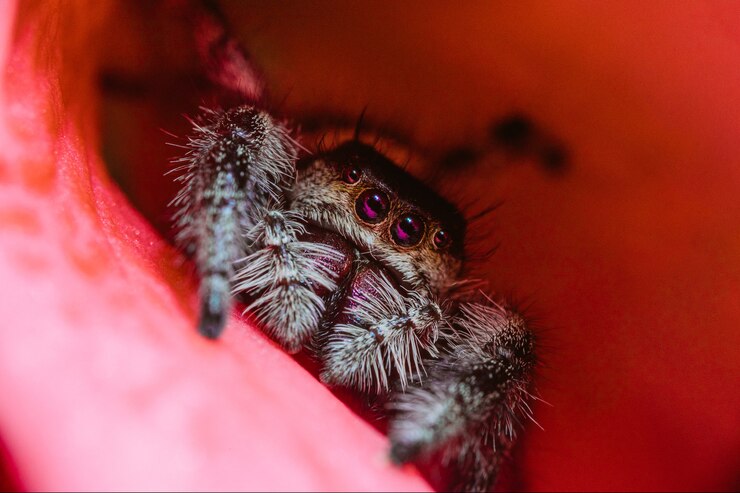Set your eyes on a cranberry bog and you’ll witness a world teeming with life. Among the rich biodiversity, a particular species stands out – the cranberry wolf spider. It may not be the most glamorous creature, but it plays a pivotal role in the delicate balance of the ecosystem. This article will explore the fascinating life of cranberry wolf spiders.
What Are Cranberry Wolf Spiders?
Cranberry wolf spiders are a type of spider commonly found in cranberry bogs. But they’re not just any spiders – they serve a crucial purpose as natural pest control agents. You see, cranberry bogs are home to many insects that love to munch on cranberry plants, like cranberry fruitworms and cutworms. Left unchecked, these pests can wreak havoc on cranberry crops and seriously reduce yields.
That’s where the cranberry wolf spiders come in! These skilled hunters prey on the very insects that threaten cranberry plants. By keeping pest populations under control, the spiders help protect the cranberries and maintain a healthy ecosystem balance. It’s a win-win situation – the spiders get a tasty meal, and the cranberries get to grow in peace!
Cranberry bogs are like a dream home for wolf spiders. The high humidity, lush vegetation, and plentiful supply of insects and small aquatic creatures make it the perfect spider habitat. These conditions allow the spiders to thrive and do what they do best – hunt down those pesky cranberry-eating bugs!
Physical Characteristics
Now that we know how important cranberry wolf spiders are, let’s take a closer look at what they actually look like. Wolf spiders are medium to large in size, typically ranging from half an inch to over an inch long. They have robust, hairy bodies that are well-adapted for their active hunting lifestyle.

One of the most striking features of wolf spiders is their arrangement of eyes. They have eight eyes total, arranged in three rows. The top row consists of two large, prominent eyes that give them excellent vision for spotting prey. The two lower rows contain smaller eyes that help with peripheral vision and detecting motion.
Wolf spiders are usually brown, gray, or black in color, with various patterns and markings that help them blend into their surroundings. Some species, like the thin-legged wolf spider, have a distinct Union Jack impression on their backs. Many wolf spiders also have spiny legs, which aid in their agility and speed when chasing down prey.
Cranberry Wolf Spiders Habitat
Cranberry Wolf Spiders have a unique preference for their living environment. They thrive in cranberry bogs, a wetland ecosystem characterized by peat soil and waterlogged conditions. These environments provide the spiders with optimal living conditions and ample food supply. They are quite agile, adept at moving across sandy soil, and are not deterred by standing water.
The spiders’ habitat is intricately linked with their role in the ecosystem. A cranberry bog provides a rich supply of insect pests, such as cranberry fruit worms and cutworms, which form the primary diet of these spiders. Through their dietary preferences, these spiders contribute significantly to pest control, thus ensuring a healthier cranberry crop.
Their Distribution
Cranberry Wolf Spiders, just as their name suggests, are primarily found in areas where cranberries grow. These spiders are widely distributed across North America, particularly in the northern regions where cranberry bogs are common. These regions provide the perfect conditions for the spiders to flourish, with the right combination of food supply and habitat.
These spiders are a natural part of the cranberry ecosystem, and their presence is beneficial to farmers. By preying on harmful insects, they help to maintain a balanced ecosystem and contribute to a more sustainable approach to agriculture, reducing the need for chemical pesticides.
Cranberry Wolf Spiders Behavior
In terms of behavior, the Cranberry Wolf Spiders are solitary hunters. They do not spin webs like many other spiders; instead, they actively hunt and pounce on their prey. They are nocturnal and do most of their hunting at night.

Their hunting strategy is both efficient and effective. They use their keen sense of touch and vibration to locate and capture their prey. Once they have detected a potential meal, they quickly pounce, immobilize the prey with their venom, and then consume it.
Cranberry Wolf Spiders Reproduction
Cranberry wolf spiders have a unique way of reproducing. The males perform an elaborate courtship dance to impress the females. If the female is receptive, they will mate.
The female then creates an egg sac, which she attaches to her spinnerets. She carries this egg sac around with her until the spiderlings are ready to hatch. A single egg sac can contain dozens or even hundreds of eggs!
When the spiderlings emerge, they climb onto their mother’s back. She carries them around for a short period until they are ready to venture off on their own. It’s an incredible sight to see a female wolf spider with her tiny babies clinging to her.
Cranberry Wolf Spiders Life Cycle
The life cycle of a cranberry wolf spider is quite interesting. After the spiderlings disperse from their mother’s back, they must fend for themselves. They immediately start hunting for small insects to eat.
As the spiderlings grow, they molt several times. Molting is the process of shedding their exoskeleton so they can grow larger. Cranberry wolf spiders typically live for one to two years, depending on the species and environmental conditions.
Adult cranberry wolf spiders continue to hunt and mate in the bog. They are mostly nocturnal, meaning they are active at night. During the day, they hide under leaves or in small burrows to avoid predators and the heat of the sun.
Ecological Importance
Cranberry wolf spiders may be small, but they play a big role in the bog ecosystem. These spiders are incredibly important for keeping insect populations under control. Without them, the delicate balance of the bog could be disrupted.
In fact, many cranberry farmers rely on wolf spiders as a natural form of pest control. By having these spiders in their bogs, farmers can reduce the need for harmful pesticides. It’s a win-win situation for both the spiders and the farmers!
Wolf spiders also serve as a food source for other animals in the bog, such as birds, frogs, and even other spiders. They are an integral part of the food web and help to support the biodiversity of the ecosystem.
Conclusion
Cranberry wolf spiders play a crucial role in cranberry bogs by controlling harmful insect populations, reducing the need for chemical pesticides, and supporting sustainable farming. Their unique behaviors, such as hunting at night and carrying their young, highlight their importance in maintaining the ecosystem’s balance. By appreciating and protecting these spiders, we contribute to a healthier environment and promote the success of cranberry farming.